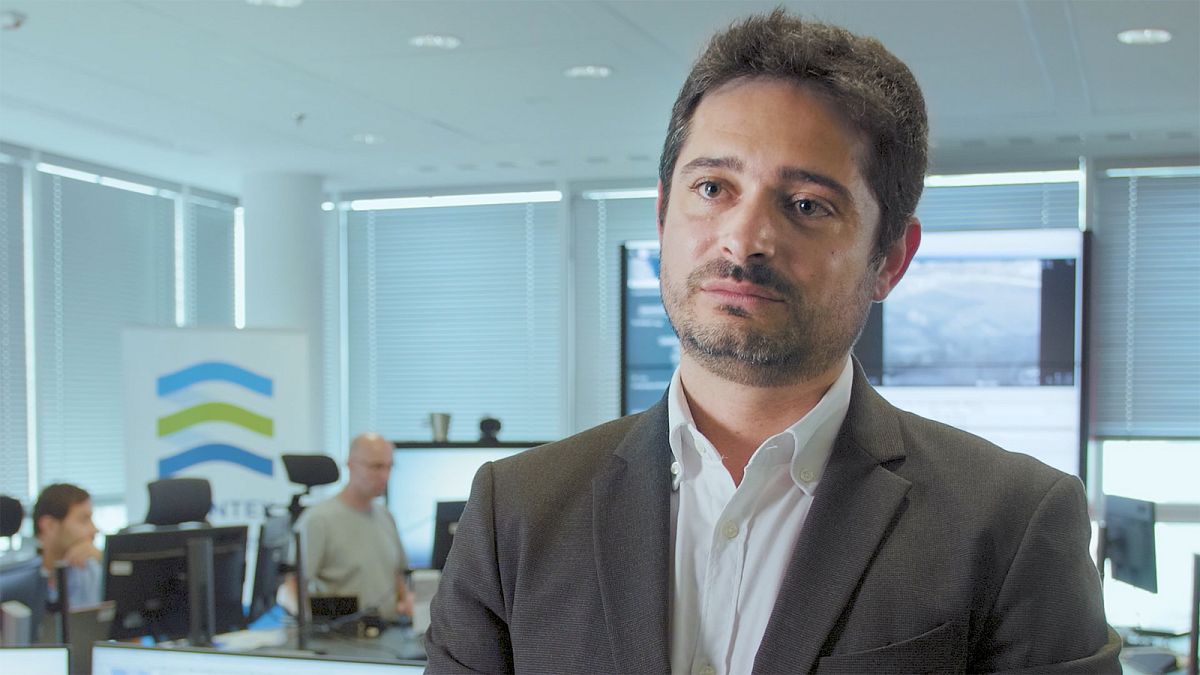After intensifying the surveillance apparatus on the external border of the European Union, Frontex - the European Border and Coast Guard Agency - has arrested several people smugglers in Croatia.
After drastically increasing border surveillance at the external border of the European Union. Frontex - the EU's border agency - has arrested several people smugglers in Croatia. Euronews got access to some rare footage documenting a special Frontex air surveillance operation alongside the 1000 km border between Croatia with Bosnia and Herzegovina.
In the footage - shot at the end of September- a Frontex surveillance plane spots a person, waiting near a van in Croatia. A group of around 20 people can then be seen running out of the woods and climbing into the van. The Frontex plane then follows the vehicle onto the motorway before stopping at a petrol station. The national authorities stopped the vehicle which was traveling at high speed. Within half an hour, the Croatian police intercepted the vehicle and arrested 2 people on suspicion of people smuggling.
This surveillance was carried out by the Warsaw-based European Monitoring Room in coordination with the Croatian police and the National Coordination Centre in Zagreb. The case is currently under investigation by the authorities.
Background on Frontex operation in Croatia
Frontex has a small operational presence in Croatia with 8 officers deployed at border checkpoints. Frontex started operating in Croatia with a surveillance airplane at the end of July. It has been monitoring the EU’s external borders in the Western Balkans area as part of Frontex’ Multipurpose Aerial Surveillance (MAS). It monitors migration flow and helps Croatia and neighboring Western Balkan countries to address the challenges on the ground.
MAS surveillance planes stream video and other data directly to the Frontex Situation Centre (FSC) at the agency’s headquarters in Warsaw. A team of experts then analyse the data and provide feedback to the national authorities. Experts from the Croatian authorities are present on board the airplane, ensuring compliance with national procedures.
Frontex data suggests continued pressure along the Greece-Albania-Montenegro-Bosnia and Herzegovina-Croatia sub-route. As migrants try to bypass existing security measures along the main route via Serbia.
Aerial Surveillance of Mediterranean, Western Balkans and the Atlantic Ocean
One of the agency’s tasks is to monitor EU’s external border and share the information with EU member states.
Member states are able to request that Frontex patrol a section of the border, or it can be based on risk analysis and operational needs. Currently, Frontex conducts surveillance of the Central Mediterranean, the Western Balkans, the part of the Atlantic Ocean (south of Portugal and at the Croatian borders). The Frontex aircrafts stream real-time video to the agency’s headquarters, which provide quick and targeted feedback to the national authorities.
Frontex's Enio da Silva spoke to us from agency's control room in Warsaw:
"This room is concerned with air surveillance that has been conducted alongside the border with Croatia and Bosnia and Herzegovina. At this precise time, we have an airplane conducting aerial surveillance in this region. This airplane is equipped with state-of-the-art infrared sensors, day and nightlight cameras. Additionally, the airplane is streaming footage directly coming from its camera into this room, as well as the coordination center of Croatia. In this room we have groups of experts, one is in charge of search and rescue operations. Another focuses on criminality and law enforcement operations and a third colleague is handling migration issues at the land border. If any suspicious event is detected during our surveillance, the images get analyzed here. This basically happens in real time. This information is shared with the EU Member States instantly."
